개요
열간 등방성 프레스(HIP) 은 금속의 다공성을 줄이고 기계적 특성과 가공성을 개선하는 데 사용되는 제조 공정입니다. 이 공정에서는 일반적으로 아르곤과 같은 불활성 가스를 사용하여 금속 주위에 고온과 고압을 균일하게 가하는 것이 포함됩니다. HIP는 강도, 밀도, 피로 저항성이 향상된 부품을 생산할 수 있기 때문에 항공우주, 자동차, 의료, 에너지 등 다양한 산업에서 널리 사용됩니다.
HIP에 사용되는 금속 분말 표
| 금속 분말 | 구성 | 속성 | 특성 |
|---|---|---|---|
| TI-6AL-4V | 6% Al 및 4% V의 티타늄 합금 | 고강도, 경량, 내식성, 우수한 생체 적합성 | 항공우주 및 의료용 임플란트에 주로 사용되며, 우수한 중량 대비 강도로 유명합니다. |
| 인코넬 718 | 니켈-크롬 합금 | 높은 강도, 고온에서의 우수한 산화 및 내식성 | 우수한 고온 특성으로 인해 가스터빈, 항공 우주 및 원자로에 널리 사용됩니다. |
| 17-4 PH 스테인리스 스틸 | 마르텐사이트 침전 경화 스테인리스 스틸 | 고강도, 우수한 내식성, 가공 용이성 | 항공우주, 화학 및 석유화학 산업에서 사용 |
| AlSi10Mg | 10% Si 및 0.5% Mg의 알루미늄 합금 | 가볍고 열전도율이 우수하며 부식에 강합니다. | 가볍고 견고한 부품이 필요한 자동차 및 항공우주 분야에 이상적입니다. |
| CoCrMo | 코발트-크롬-몰리브덴 합금 | 높은 내마모성, 우수한 생체 적합성 | 의료용 임플란트 및 치과 분야에서 일반적으로 사용됩니다. |
| H13 공구강 | 크롬-몰리브덴 열간 가공강 | 높은 인성, 우수한 열 피로 저항성 | 다이캐스팅, 압출 및 단조 애플리케이션에 사용 |
| 316L 스테인리스 스틸 | 오스테나이트 스테인리스 스틸 | 우수한 내식성, 우수한 용접성 | 해양, 의료 및 식품 가공 분야에서 일반적으로 사용됩니다. |
| Ti-5553 | 5% Al, 5% V, 5% Mo, 3% Cr이 포함된 티타늄 합금 | 고강도, 우수한 크리프 저항, 경량 | 항공우주 및 고성능 자동차 애플리케이션에 사용 |
| 마레이징 스틸 | 저탄소 철-니켈강 | 초고강도, 우수한 인성, 가공 용이성 | 툴링, 항공우주 및 스트레스가 많은 애플리케이션에 자주 사용됩니다. |
| MP35N | 니켈-코발트-크롬-몰리브덴 합금 | 뛰어난 강도, 내식성, 생체 적합성 | 강도와 내식성이 모두 중요한 의료, 항공우주 및 해저 애플리케이션에 활용됩니다. |
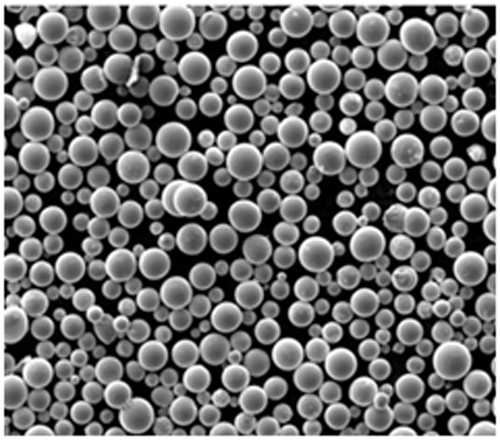
열간 등방성 프레싱(HIP)의 구성
HIP에 사용되는 재료의 구성은 최종 제품의 특정 용도 및 원하는 특성에 따라 달라집니다. HIP에 일반적으로 사용되는 금속 분말에는 티타늄 합금, 니켈 기반 초합금, 스테인리스강 및 공구강이 포함됩니다. 이러한 각 재료는 다양한 산업 분야에 적합한 고유한 특성을 제공합니다.
속성 및 특성 열간 등방성 프레스(HIP)
열간 등방성 프레스는 기계적 특성 개선, 밀도 향상, 다공성 감소 등 다양한 이점을 제공합니다. 이러한 특성 덕분에 강도, 내피로성 및 전반적인 내구성이 뛰어난 부품을 만들 수 있습니다. 아래는 HIP 소재의 특성과 특성을 요약한 자세한 표입니다.
| 속성 | 설명 |
|---|---|
| 밀도 | HIP는 다공성을 크게 줄여 고밀도 구성 요소로 이어집니다. |
| 힘 | 이 프로세스는 재료의 기계적 강도를 향상시킵니다. |
| 피로 저항 | 피로 및 주기적 부하에 대한 내성 향상 |
| 인성 | 균일한 압력 적용으로 인성 향상 |
| 내식성 | HIP에 사용되는 특정 합금은 내식성이 뛰어납니다. |
| 생체 적합성 | Ti-6Al-4V 및 CoCrMo와 같은 소재는 생체 적합성이 있어 의료용 임플란트에 적합합니다. |
| 열 전도성 | AlSi10Mg와 같은 일부 HIP 소재는 우수한 열 전도성을 제공합니다. |
| 내마모성 | CoCrMo 및 H13 공구강과 같은 합금은 공구 및 의료 응용 분야에 필수적인 높은 내마모성을 제공합니다. |
열간 등방성 프레스(HIP)의 적용 분야
HIP는 여러 산업 분야의 다양한 애플리케이션에서 활용되고 있습니다. 우수한 기계적 특성을 가진 부품을 생산할 수 있기 때문에 중요한 부문에서 매우 중요한 공정입니다. 아래 표는 HIP의 몇 가지 일반적인 응용 분야를 간략하게 설명합니다.
| 산업 | 애플리케이션 |
|---|---|
| 항공우주 | 제트 엔진 부품, 터빈 블레이드, 구조 부품 |
| 자동차 | 엔진 부품, 변속기 부품, 경량 구조물 |
| 의료 | 임플란트(고관절, 무릎, 치과용), 수술 기구 |
| 에너지 | 원자로 부품, 가스 터빈 |
| 툴링 | 다이캐스팅 금형, 압출 금형, 단조 공구 |
| 석유 및 가스 | 해저 부품, 시추 도구 |
| 방어 | 갑옷 도금, 무기 구성품 |
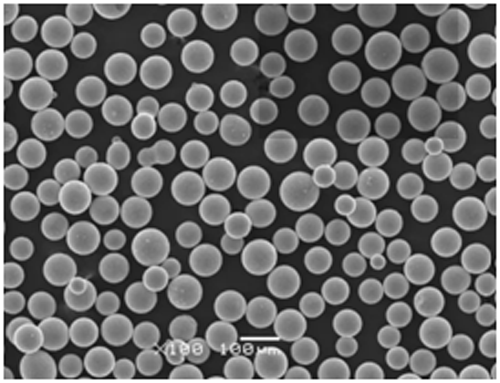


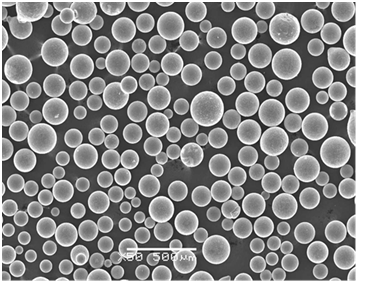
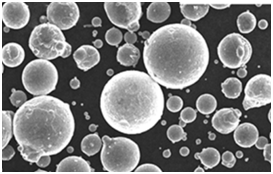

HIP의 사양, 크기, 등급 및 표준
HIP 자료의 사양과 표준은 산업과 용도에 따라 다릅니다. 아래는 HIP와 관련된 일반적인 사양, 크기, 등급 및 표준에 대한 개요를 제공하는 표입니다.
| 재료 | 사양 | 크기 | 성적 | 표준 |
|---|---|---|---|---|
| TI-6AL-4V | ASTM B348, AMS 4928 | 직경: 10-500 mm | 5학년 | ASTM, AMS |
| 인코넬 718 | AMS 5662, ASTM B637 | 직경: 6-400 mm | UNS N07718 | ASTM, AMS |
| 17-4 PH 스테인리스 스틸 | ASTM A564, AMS 5643 | 직경: 8-300mm | 630학년 | ASTM, AMS |
| AlSi10Mg | ISO 3522 | 직경: 5-250 mm | – | ISO |
| CoCrMo | ASTM F75, ISO 5832-12 | 직경: 4-150 mm | – | ASTM, ISO |
| H13 공구강 | ASTM A681, DIN 1.2344 | 직경: 10-500 mm | H13 | ASTM, DIN |
| 316L 스테인리스 스틸 | ASTM A276, AMS 5648 | 직경: 6-300mm | 316L | ASTM, AMS |
| Ti-5553 | AMS 4991 | 직경: 8-200mm | Grade 5553 | AMS |
| 마레이징 스틸 | AMS 6514 | 직경: 10-300mm | 250, 300 등급 | AMS |
| MP35N | ASTM F562, AMS 5844 | 직경: 5-150 mm | – | ASTM, AMS |
공급업체 및 가격 세부 정보
제조 요구 사항을 위해 HIP를 고려할 때는 공급업체와 가격 세부 정보를 파악하는 것이 중요합니다. 아래 표에는 평판이 좋은 몇 가지 공급업체와 다양한 HIP 재료에 대한 대략적인 가격이 나와 있습니다.
| 공급업체 | 재료 | 가격(kg당) |
|---|---|---|
| 카펜터 기술 | TI-6AL-4V | $150 |
| 특수 금속 | 인코넬 718 | $180 |
| 샌드빅 머티리얼즈 | 17-4 PH 스테인리스 스틸 | $80 |
| ECKA 과립 | AlSi10Mg | $50 |
| ATI 금속 | CoCrMo | $200 |
| 우데홀름 | H13 공구강 | $70 |
| 아웃토쿰푸 | 316L 스테인리스 스틸 | $60 |
| TIMET | Ti-5553 | $170 |
| 아르셀로미탈 | 마레이징 스틸 | $160 |
| 포트 웨인 금속 | MP35N | $250 |
HIP의 장점과 한계
HIP는 다양한 이점을 제공하지만, 그 장점과 한계를 이해하는 것이 중요합니다. 아래 표는 HIP의 장단점을 비교한 것입니다.
| 장점 | 제한 사항 |
|---|---|
| 다공성 감소 및 밀도 향상 | 높은 장비 및 운영 비용 |
| 기계적 특성 향상 | 특정 재료 크기로 제한 |
| 내피로성 및 내식성 향상 | 긴 처리 시간 |
| 균일한 압력 적용 | 전문 지식이 필요함 |
| 재료 균질성 향상 | 모든 재료 유형에 적합하지 않음 |
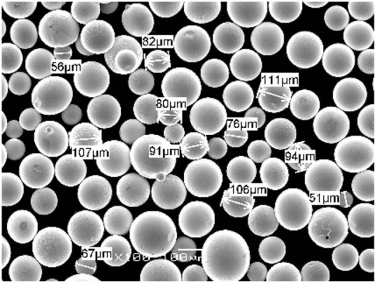
자주 묻는 질문
| 질문 | 답변 |
|---|---|
| 열간 등방성 프레싱(HIP)이란 무엇인가요? | HIP는 재료에 높은 압력과 온도를 가하여 물성을 개선하는 제조 공정입니다. |
| HIP는 재료 특성을 어떻게 개선하나요? | HIP는 다공성을 줄이고 밀도를 높이며 강도 및 피로 저항과 같은 기계적 특성을 향상시킵니다. |
| HIP에는 일반적으로 어떤 재료가 사용되나요? | 일반적인 재료로는 티타늄 합금, 니켈 기반 초합금, 스테인리스강 및 공구강이 있습니다. |
| HIP를 사용하는 데 제한이 있나요? | 예, HIP는 비용이 많이 들고 처리 시간이 길며 특정 재료 크기와 유형으로 제한될 수 있습니다. |
| 어떤 산업에서 HIP를 사용하나요? | HIP는 항공우주, 자동차, 의료, 에너지, 툴링, 석유 및 가스, 방위 산업에서 사용됩니다. |
| HIP의 장점은 무엇인가요? | 밀도, 강도, 내피로성, 전반적인 재료 균질성 향상 등의 이점이 있습니다. |
| HIP는 모든 소재에 적합합니까? | 아니요, HIP는 모든 재료에 적합하지 않습니다. 특정 합금 및 금속에 가장 적합합니다. |
| HIP는 생산 비용에 어떤 영향을 미치나요? | HIP는 고가의 장비와 운영 비용으로 인해 생산 비용이 증가할 수 있습니다. |

